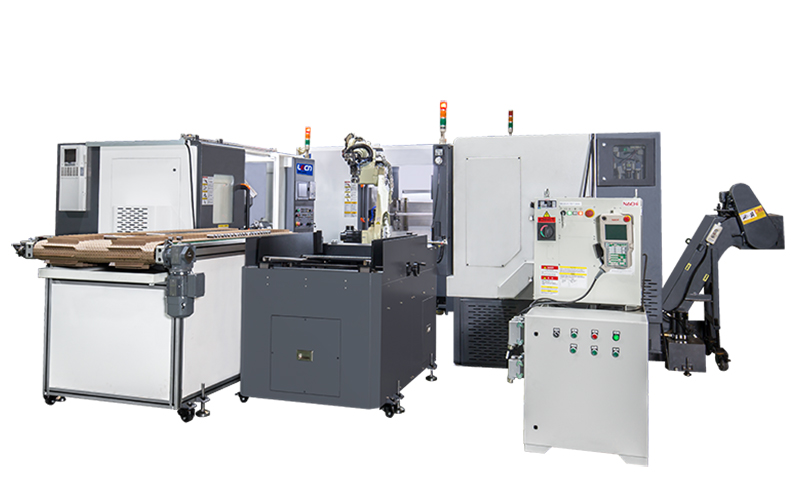Your Position: Home - Metal & Metallurgy Machinery - What quality management is involved in the CNC machining process?
CNC machining tools offer numerous advantages over traditional equipment in mechanical processes, both in terms of precision and efficiency.
In traditional machining, tasks such as loading, measuring, tool changing, and adjusting the machine consume over 70% of the time, whereas CNC machining significantly reduces processing time. By consolidating processes, CNC machining minimizes the impact of multiple workpiece fixturing on precision, eliminates errors, and reduces labor intensity. Predictable CNC machining hours not only enhance efficiency but also improve product quality and indicate higher anticipated yields, thus facilitating quality management.

After a detailed study of the CNC machining process, strict quality control and management are categorized as follows:
The cost of product processing is directly related to its structural technology. Therefore, reducing the complexity of processing technology from the perspective of product design can lower processing costs, shorten CNC processing time, enhance processing quality and efficiency, ultimately boosting CNC productivity.
The CNC system manages tool life based on calculated machining times or usage duration. When tools reach their expected machining times or usage durations, the CNC automatically stops. Failure to monitor adequately for timely tool replacement or resetting affects CNC processing capacity.
Especially in multi-step CNC processing with high precision requirements and large quantities, a variety of tools are needed. This leads to frequent automatic tool changes, increased tool wear, and thus frequent manual tool changes and adjustments.
Therefore, tool wear is a key factor affecting CNC's normal production rhythm and capacity.
Improving tool life through technological advancements not only saves tool costs but, more importantly, reduces spindle downtime, thereby enhancing CNC utilization and product quality.
During the determination of product processing technology, all functions of CNC and other numerical control machine tools should be fully considered. This ensures shortened processing routes, maximized cutting performance of tools, optimization of various CNC process parameters, ensuring high-speed spindle processing to reduce part processing cycle time, ultimately improving processing efficiency and product quality.
When formulating CNC machining processes, feasibility and the influence of process formulation on processing efficiency should be prioritized. By rationalizing the sequence of machining processes and reducing tool changes, CNC processing cycle times can be effectively shortened, enhancing capacity.
During CNC production processes, SOPs for production operations must be formulated and strictly implemented to regulate manual operations, reduce instances of negative work attitudes, and eliminate unnecessary time wastage. Implementing incentive systems can boost operators' productivity, thereby enhancing capacity and product processing quality.
Failure to deliver products promptly during production leads to spindle downtime, impacting capacity. Factors affecting the timely processing of products include insufficient awareness among logistics personnel, operator negligence, and improper workshop layouts or logistics systems. These issues affect CNC's capacity utilization. Therefore, optimizing workshop layouts and logistics methods enhances the timeliness of products awaiting processing. Simultaneously, personnel management should be reinforced.
Regular equipment and fixture checks reduce potential abnormalities in Automatic CNC machine, ensuring the longevity of electrical components such as cylinders, solenoid valves, and motors on tool fixtures in oil environments. This minimizes production interruptions that may occur during CNC spindle operation, improving spindle utilization.
Effective workshop layouts optimize the allocation of human, material, and financial resources, resulting in the most rational and efficient arrangement. This fosters logistics and value streams, fundamentally improving production efficiency, reducing logistics and production costs, minimizing inventory, and ultimately transitioning workshop production to a mode characterized by multiple varieties, small batches, and flexibility. The quality of workshop layout design significantly impacts logistics costs, logistics efficiency, actual capacity, and production efficiency during production system operations. Statistics show that 20%-50% of product manufacturing costs are allocated to logistics, storage, and other non-processing processes, with effective layout design saving over 30% in logistics costs. Therefore, the advantages and disadvantages of workshop layouts not only affect overall production flow but also become crucial factors influencing product production efficiency, capacity, and production costs.
To ensure high-quality management in the CNC machining production process, rational planning and implementation are essential for effectively enhancing production capacity.
172
0
0
Comments
All Comments (0)